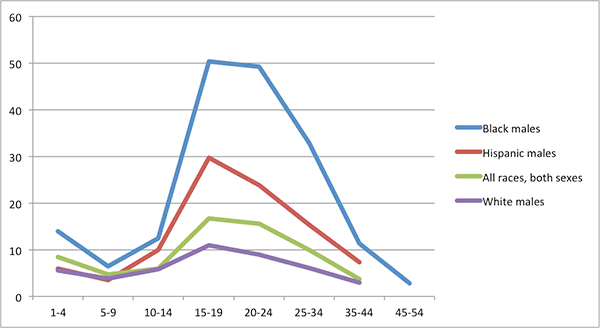Originally published at the Huffington Post: Critics of Obama’s war strategy seem to want him to fight a new kind of war with old weapons.
As I described last time, they judge success and failure by traditional measures — in particular, by who controls how much ground.
But in a new kind of war — counterinsurgency — such measures don’t always apply, at least not in the same way.
Think about all the anxiety over how much territory ISIS currently holds, and the calls for U.S. “boots on the ground.”
Yes, boots on the ground might very well win territory faster. But in counterinsurgency, territory is just one dimension among many, and the others can matter more. When and how you control territory can be as important as whether you control it at all.
U.S. war planners learned this lesson, at great cost, in Vietnam. They had to learn it all over again after the invasion of Iraq.
In both cases, they tried to control territory that turned out to be quicksand.
That was because while ground may have been won, the political and social environments were not. In both cases we were fighting on behalf of governments that didn’t have the support of big segments of their country’s populations — they were illegitimate. And so there was no foundation on which to build a lasting victory. Instead, there was “quagmire.”
The result of this painful learning was the emergence of a new doctrine of counterinsurgency, based on American experiences as well as those of colonial powers. The doctrine was established by the U.S. Army – Marine Corps Counterinsurgency Field Manual, published in 2006 (and since updated). It was put into practice in the strategic turnaround known as the Iraq Surge.
The Field Manual recognizes that in fighting an insurgency, strategy can’t just be “enemy-centric,” as it was in the past. It must also be “population-centric:” it must address and fix the social factors that give rise to the insurgency in the first place.
From the Manual:
Western militaries too often… falsely believe that armies trained to win large conventional wars are automatically prepared to win small, conventional ones. In fact, some capabilities required for conventional success — for example, the ability to execute operational maneuver and employ massive firepower — may be of limited utility or even counter-productive in COIN [counterinsurgency] operations. Nonetheless, conventional forces beginning COIN operations often try to use these capabilities to defeat insurgents; they almost always fail. [Counterinsurgency Field Manual, 2006 edition, Introduction, page ii.]
This sounds a lot like the kind of plan for which Senators John McCain and Lindsey Graham, for example, keep beating the drum.
Instead, says the Manual:
…success in the form of a durable peace requires restoring legitimacy, which, in turn, requires the use of all instruments of national power. A COIN effort cannot achieve lasting success without the HN [host nation] government achieving legitimacy. [ibid, page 39.]
This population-centric approach was behind the Sunni Awakening in Iraq, which provided critical social support for the military surge.
You can see population-centric thinking at work in what President Obama is doing now:
- Insisting that the Iraqi government become more legitimate, in the eyes of both civilians and soldiers
- Pushing Iraq to defend itself as much as possible with its own forces
- Forming an alliance of Sunni Arab states against the Sunni extremists of ISIS.
But the adoption of population-centric strategy doesn’t mean the enemy-centric kind has been discarded (though some feel the U.S. military initially swung too far in that direction). Sometimes you just have to take out the bad guys, the people who will never stop attacking you, no matter how much social good you do.
And we’ve seen that happening, too, first in the killings of Al Qaeda leaders, including Osama Bin Laden, and now in the air strikes on ISIS. There’s something new about these enemy-centric actions, too, though: they aren’t massive, conventional attacks. Instead, they’re targeted, both for their direct effect and to avoid harming and alienating the larger population.
Critics, judging by the old-war measure of success, complain that the air strikes aren’t winning enough territory. I doubt if that’s the point, at least for now. The strikes appear to be aimed at ISIS’ leadership, its infrastructure and its sources of financial support: the oil installations that had been yielding millions of dollars per day.
In addition to his immediate strategy of employing both population- and enemy-centric approaches, Obama has a third element in play, one that works at a larger scale and over a longer time span: energy policy. The main reason we’ve been tangled up for so long with so many illegitimate regimes is, of course, our dependence on their oil. From day one of his administration, reducing that dependence has been one of Obama’s highest priorities. He’s pursuing it, with more success than is often reported, through alternative energy, domestic oil and gas drilling, and conservation — his “all of the above” strategy.
The president isn’t doing this just because he wants to help the environment, although of course that’s part of it. A smarter energy policy also leads towards greater national security, through ending the oil-fueled foreign policy distortions that help spawn the insurgencies we keep having to fight.
Naturally, reasonable people can debate elements of Obama’s strategy — neither fracking nor drones, for example, are uncontroversial — or with the strategy as a whole — nothing, after all, is certain.
But the debate over both the strategy and its elements would be more useful if more people understood their meaning: a new way of fighting a new kind of war.
Critics who call for simplistic solutions like “getting tough” — some go so far as to recommend imitating Vladimir Putin, of all people — are trying to re-fight the wars of the past.

